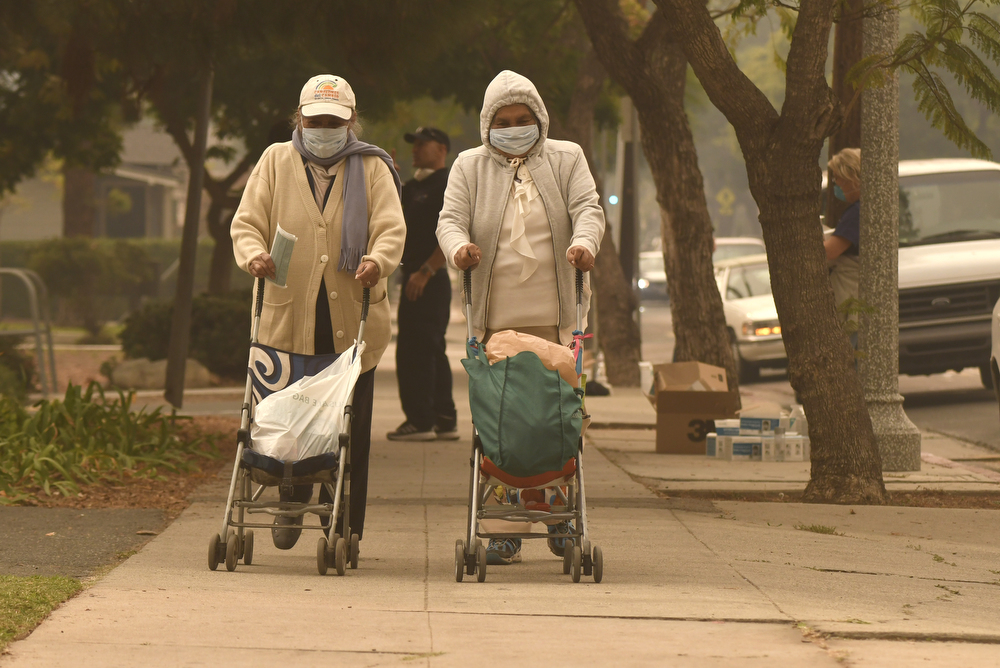Santa Barbara Tourism Reels, Recovers After Fire, Mudslides
Closure of Highway 101 Meant $949,000 a Day Losses in Visitor Spending
Though Santa Barbara is still reeling from the devastating effects of the Thomas Fire and subsequent Montecito mudslides, it is critical for the long-term recovery of the region’s economy that the show go on.
That was the message presented last Thursday morning during the Community Tourism Recovery Forum hosted by Visit California and Visit Santa Barbara. Kathy Janega-Dykes, president of Visit Santa Barbara, reminded the 180 business owners and politicians that filled the Hyatt Centric’s banquet hall of the gravity of the economic situation and how they can take action to remedy it. “We need to support our economy,” said Janega-Dykes. “It is critical for our community, for our city, and for our employees.”
Santa Barbara, a town known globally for its wide, sandy beaches, bustling shopping scene, and exceptional restaurants and wineries, took a massive fiscal hit when the fire began to descend on the community in early December and burned through the holiday season until January 12.

Even in non-evacuation zones, the toxic air led businesses that often rely on the holiday season for income to close temporarily or cut staff to reduce costs. To make matters even worse, the Montecito mudslides, which took the lives of 21 people and damaged or destroyed hundreds of properties, shut down Highway 101 for 10 days and closed the restaurants, shops, salons, and hotels that line Coast Village Road and various parts of Montecito.
According to Visit California, every week Highway 101 was closed resulted in a loss of an estimated $6.6 million of visitor spending in Santa Barbara County. On a per-day basis, the loss was $949,000.
Sharon Byrne, executive director of the Coast Village Association, emphasized the effect the natural disasters have had on business owners and employees. “Think about what a month of reduced income looks like, and then another 20 days of no income, and ask how your budget would do under those kind of circumstances,” she said.
Many of the speakers agreed that while they appreciate the sympathy expressed online by local celebrities such as Oprah Winfrey and Ellen DeGeneres, there have been economic consequences to the widely circulated videos and photos of the wreckage.
“If we only talk about it from the local perspective, then people will think that this community has turned into a wasteland, and we won’t have the business to rebuild,” said 1st District Supervisor Das Williams. “So many negative photos and videos have been out there on the internet and worldwide,” said Santa Barbara Mayor Cathy Murillo.
However, Murillo, along with the rest of the speakers, agreed that social media will be an incredibly powerful tool in showing the progress the community has made in the recovery process and will also prove that much of the area is undamaged and open for business. “I encourage everybody: Let’s put pictures of today out there,” she said.
“Right now we need to be posting photos of the blue skies and the ocean,” Janega-Dykes added. “Get rid of all the photos that show the devastation, because we want our visitors to return.”
The speakers repeatedly stressed to the audience that staying positive online will attract tourists who, as Williams put it, “can help us rebuild just by recreating here.” Recent online campaigns such as #SantaBarbaraGrateful and #SantaBarbaraShines have been created to present a message of unity and positivity.
“If you take a look at our approach, first and foremost, we will always be characterized by sensitivity and compassion,” said Janega-Dykes. “But we are a marketing agency, and we have to be responsive, and we have to be nimble.”
Despite the seriousness of the situation, the speakers were unequivocally optimistic that the Santa Barbara community will not only survive the tragedy but ultimately come out stronger and more connected than ever.
“Santa Barbara County is resilient and certainly will recover,” said Janega-Dykes. “We know that the last two months have been very trying and unprecedented for our hospitality industry, but I firmly believe ― and I hope you do too ― that brighter days are ahead of us. There’s going to be a lot of work, but we will get it done.”



